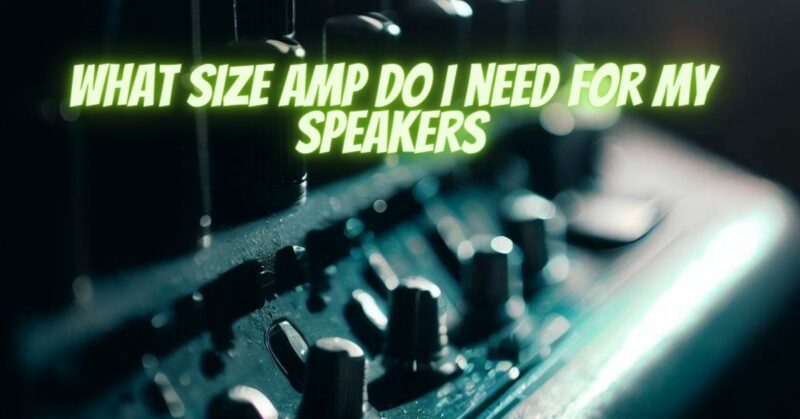Choosing the right amplifier size for your speakers is a crucial step in building a reliable and powerful audio system. Amplifiers are responsible for driving the speakers and converting the low-power audio signal from your source devices (such as CD players, turntables, or smartphones) into the high-power output required to produce sound through the speakers. Selecting an appropriate amplifier size ensures optimal performance, sound quality, and avoids potential damage to your speakers. In this article, we will explore the factors to consider when choosing the right amplifier size for your speakers to create a balanced and satisfying audio setup.
- Match Amplifier Power to Speaker Power:
The first and most crucial factor in selecting an appropriate amplifier size is to match the power ratings of the amplifier and the speakers. Both the amplifier and the speakers will have a specified power rating measured in watts (W). It’s essential to ensure that the amplifier’s power output is within the acceptable range of the speaker’s power handling capability. If the amplifier provides too little power, it may not fully drive the speakers, resulting in weak and distorted sound. Conversely, an amplifier with too much power can overwhelm the speakers and potentially damage them.
- Speaker Sensitivity:
The sensitivity of the speakers is another critical consideration when choosing the appropriate amplifier size. Speaker sensitivity is measured in decibels (dB) and indicates how efficiently the speakers convert the electrical signal from the amplifier into sound. Higher sensitivity speakers require less power from the amplifier to produce the same volume level as lower sensitivity speakers. When pairing speakers with an amplifier, consider their sensitivity rating to ensure a proper match and efficient use of power.
- Room Size and Listening Environment:
The size of the room and the intended listening environment also play a role in determining the appropriate amplifier size. Larger rooms or outdoor spaces may require more powerful amplifiers to provide sufficient sound coverage and volume. Conversely, smaller rooms or intimate listening areas may benefit from smaller, lower-powered amplifiers, as excessive power may be unnecessary and lead to listening discomfort.
- Desired Sound Level:
Consider the volume level at which you intend to listen to your music. If you enjoy playing music at high volumes, a more powerful amplifier may be necessary to achieve the desired sound levels without straining the amplifier or speakers. On the other hand, if you primarily listen at lower volumes, a less powerful amplifier may suffice.
- Speaker Impedance:
Speaker impedance, measured in ohms (Ω), represents the electrical resistance the speakers offer to the amplifier. Amplifiers are typically designed to work with specific speaker impedance levels. It’s essential to match the impedance of the speakers to the amplifier’s recommended range to ensure proper functioning and prevent potential damage to both components.
Selecting the appropriate amplifier size for your speakers is a critical step in building a well-balanced and high-quality audio system. Matching the amplifier’s power output to the speaker’s power handling capability, considering speaker sensitivity, room size, listening environment, desired sound level, and speaker impedance are all important factors to consider. It’s essential to do thorough research, consult with experts, and, if possible, audition different amplifier and speaker combinations to find the perfect match for your audio needs and preferences. A properly matched amplifier and speaker setup will deliver exceptional sound quality, ensure longevity of your audio equipment, and enhance your overall listening experience.


